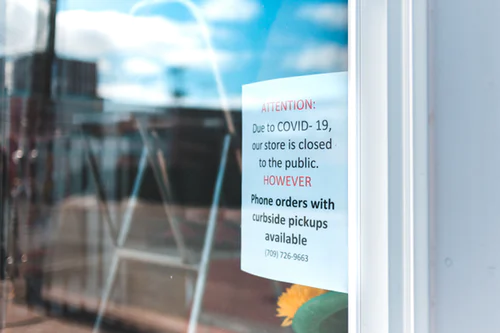Blog

We are at the end of the beginning of this round of COVID-19. Its spread may (or may not) be slowed by the warm weather, but nonetheless many states in the US are looking to open again (for the time being). We are still not sure what may happen once people normalize their routines, or what that will even look like. A safe return strategy could be a slow and gradual reopening of the economy, and that looks like the direction in which many governments are moving. However, it is important for organizations to have certain strategies from a security perspective and to protect the health of those most at risk. The long-term effects of this virus are unknown, but we can take steps to mitigate the risks.
Limiting workdays
More flexible work days seem likely, and this can dovetail with limiting the number of employees allowed back into the office at a time. Four-day work weeks may become the norm, or some hybrid model of this. A recent study indicates this improves worker productivity. Some companies may allow employees to always work from home, thus cutting some real estate overhead and costs. It is important for companies to monitor long-term worker productivity, not just for a quarter, but over a year. We may find that many of the meetings (and now Zoom calls) once deemed necessary are no longer relevant for the bottom line.
Protecting those most at risk
Employees over 65 and/or with pre-existing conditions who do not want to come into the office must be accommodated. There will most likely be legal precedents for this. As most households have at least one person at risk. this creates difficult challenges about who goes to work and who does not. Will workplaces now have a “a COVID-19 free” certification? Retirement age was pushing into the 70’s as workers were happy (and productive) well into their golden years. Will we see a mandatory retirement age come into practice?
Implementing social distancing rules
This rule may be hard to follow as we see the breaking of these rules all over the country. But if we are still dealing with rising cases of COVID-19 (or periodic outbreaks) these rules must be enforced and put into practice by HR in the workplace. This article covers this possible scenario and what it could look like: “such a plan will need to be specifically tailored to the employer and to the industry in which it operates and take into account federal, state, and local guidance and mandates. Features of a Social Distancing Plan may include some or all the following, changes to open workspace configuration, repurposing of conference rooms, lunchrooms, and other communal spaces to allow for more distance, and Installation of physical barriers in common areas”
Protocol on health and who can enter the workplace
Testing is more readily available, with faster results as technology improves. We will have to create protocols around health and workers who have contracted COVID-19 in the past. Or, as an example, what if an employee contracts the virus now? How does that factor into sick days, etc.? We are learning as we go, but matters like this will need to be documented. While worker privacy is key, this article states that “employers may ask if employees are experiencing fever, chills, cough, shortness of breath, or a sore throat. Be sure to maintain all health information as a confidential medical record in compliance with the Americans with Disabilities Act.” Civil liberties are an important part of this country’s identity but may be slowly eroded due to safety concerns.
Focusing on mental health
Many workers may have problems adjusting to returning to the office and being around co-workers. Some may have been sick or saw a loved one suffer or die, so mental health workers should be brought in. Mental health issues are a side effect of this pandemic and need to be addressed. We are social animals and not accustomed to long periods without social contact.
Eventually we will find a way to regain our economic footing. The closest black swan event was 9/11, and we overcame that, with changes related to security and air travel. With COVID-19, we are adjusting our lives to a ‘new normal’. It is best to have a plan in case warmer weather does not significantly impact the virus’s spread.
Interfor is happy to share with you a set of return-to-work guidelines we have compiled. You can find them here and click on the button at the bottom of the page.

